Heather takes a boat trip to the wildlife sanctuary of Skomer Island off the coast of Pembrokskire in Wales, enjoy walking through sheets of bluebells, getting close to the elegant puffins that nest there and spotting seals and other wildlife.
From the small landing stage at Martin’s Haven we crowded onto the Dale Princess, for the short boat ride to Skomer Island off the coast of Pembrokeshire. This island visit was one of the highlights of our walking weekend with Macs Adventure as part of their Best of Pembrokeshire itinerary, since we would be there at the start of the puffin nesting season in May.
The open boat could seat up to 50 people, shoulder to shoulder on the wooden benches, but once we were all seated, the skipper joked, “Squeeze up! We need to get another 50 on board”. The sea was a milky green-grey, with gently rolling waves and I wondered whether Guy would regret having those kippers for breakfast.
The young lad on the bench opposite has his binos at the ready, “I’ve seen a seal!” he cried enthusiastically, but nobody quite believed him. Luckily, before we had time to feel seasick, we landed on Skomar Island and climbed the steep steps of the landing stage to the information point where the warden was waiting for us.
The Warden gave us a short introduction to Skomer Island, which is owned by the Welsh government, but run by the Wildlife Trust of South and West Wales who look after the wildlife, researchers and day visitors. The island is a unique wildlife habitat for the seals and seabirds that live there and has the largest colony of 600,000 Manx Shearwaters anywhere in the world.
This seabird is agile at sea but clumsy on the land, so it only returns to its burrows at night to avoid being preyed upon by seagulls, making a soulful call that was thought by passing mariners to be the cry of the ghosts of drowned sailors.
To be honest it’s difficult to get excited about a bird that you probably won’t see unless you are staying overnight on the island. So like most of the other visitors we had come to see Skomer’s other big attraction – the Puffins.
Due to their photogenic orange legs and bills, the puffins feature on practically every local postcard and souvenir. Twenty thousand of them nest on Skomer Island and since they are quite unafraid of humans, it’s one of the few places where you can get really close to them, without the need for a telephoto lens.
The Warden suggested that we head first towards the visitor’s centre in the middle of the island, then follow the path around the cliffs towards the Wick where most of the puffin burrows are to be found.
The golden rule is to stick to the path. Practically every other square inch of land on Skomer is like a giant Swiss cheese, full of burrows that are liable to collapse if trodden on. We wouldn’t want to be responsible for squashing a seabird or rabbit, would we?
You may also enjoy: 12 Breathtaking things to do in North East Wales
The Visitor’s centre on Skomer
At the visitor’s centre we learned that Skomer was inhabited in prehistoric times and some of the stone boundary markings on the island are from this period. In the Middle Ages, rabbits were introduced to the island and farmed for their meat and fur, although today they seem to be a mixed blessing.
Rabbits keep down the vegetation so that the puffins can build their burrows around the coastal areas. But the result is that the island is quite barren and we passed a few wire enclosures where the vegetation has been protected from rabbits to let it recover.
In the 19th century a farm was established and potatoes were grown on the island until the last farmer, Reuben Todd left in the 1950s and sold the island to the Welsh Government. The old farmhouse is now a ruined shell since its roof blew off in a storm.
But a new building has been constructed along one side of the enclosure, housing accommodation for researchers and overnight visitors, as well as a small visitors centre. There are compost toilets and a picnic area with a glazed roof providing welcome shelter from wind and rain within the walls of the old farm building.
After reading about the history of the island in the Visitor’s centre, we followed the path towards the Garland Stone, where the warden had told us that seals and dolphins could often be seen.
The grassy paths led through a sea of bluebells, shivering gently in the breeze and we could smell the faint fragrance in the air. They were so beautiful that I couldn’t resist stopping to take plenty of photos, while Guy marched off into the distance.
At the Garland Stone, there were a few rocky outcrops where you might sit for a picnic overlooking the cliffs. But with a cloudy sky it was not really weather for stopping.
The wind was increasingly bitter as we walked on and I pulled my hood up over my warm beret and scarf, thankful that I’d thought to bring them. Every so often there was a pile of bone and feather, where a Manx Shearwater had met its end, preyed on by the owls and seagulls on the island.
You may also enjoy: Exploring the food in North East Wales
On the northern side of the island the bluebells were mixed with pink campion and other tufts of white wildflowers, surrounded by burrows everywhere giving the ground the appearance of a sponge.
We passed a few enclosures of chicken wire, where protection from the rabbits had been set up to allow the bracken and heathland to regenerate.
As the rabbits appeared to be reaching problematic levels I wondered why they didn’t just reduce numbers as they had done in past centuries, by selecting a few for the rabbit stew.
The Puffins on Skomer Island
Conscious that we didn’t have too long before our boat left, we hurried along the path to The Wick, an area of the island that is known for its large puffin colony. Before us was the impressive 100 metre high sea cliff, with a sheer drop and the screeching of seagulls filling the air.
The path was bounded by ropes on both sides which kept visitors from stepping on the many burrows, or getting too close to the puffins nesting in them.
Every so often one would pop out of a burrow, preen itself, pose obligingly for a few photos and then pop back inside. The puffins with their orange legs and bills are very distinctive, although having seen so many close-up photos I thought they would be larger, perhaps the size of a small penguin.
In fact they are about the same size as a seagull, but somehow more elegant, looking a little like a butterfly as they flapped their wings to take off.
From the beginning of May the puffins start to arrive on Skomer, digging out out holes and lay eggs, so standing at The Wick you are in the middle of their bedrooms and living rooms.
This is not the place to lay out your picnic or stay too long in one place, since the puffins need to be able to move freely and go about their business on both sides of the footpath.
June is probably the best time to visit the puffins on Skomer. This is when their chicks have hatched and the adults are going to and from their burrows with fish to feed their young – with plenty of puffin photo opportunities.
With a little time to spare before the 3pm boat back to the mainland, we settled in a sheltered lea of a rock, and a Jackdaw joined us and hopped around us without any fear. Guy was starting the feel a bit nervous to have this bird circling us so closely as if we might become victims in the film “The Birds”, although the bird was probably just hopeful that we would share our picnic with him.
Back past the lime kiln above the landing stage and we spotted a large colony of seals lazing on a small and inaccessible beach, but then it was time for the return trip on Dale Princess. The weather seemed to be brightening a little and the water was aquamarine, but still I was feeling the need for a hot bath after a day on such an exposed island.
As I walked up the lane from the boat, the man in front of me said to his wife, “Well I won’t come back to Skomer to walk around the island, but I’ll come back to look at those puffins any day” he paused; “and maybe those bluebells as well”.
Where we stayed
Our bed and breakfast accommodation was arranged by Macs Adventure as part of the Best of Pembrokeshire Walking holiday and all the places that we stayed were of a high standard with a friendly welcome and substantial breakfast. The night before our visit to Skomer, we stayed at The Clock House in Marloes where bed and breakfast costs £42-47 per person per night.
The Clock House B & B in Marloes has an adjoining cafe where we had breakfast and is opposite a clock tower that was built of local stone in 1904 in memory of the local lord of St Bride’s mansion.
Our small room on the first floor had white walls and cheerful blue furnishings, a seaside theme with a stripy deckchair and spotty blinds, an en suite shower room and plenty of puffins on the wall.
The next morning, the friendly proprietor Sue Twydale made us a hot strong coffee and we enjoyed the cooked breakfast of kippers for Guy and eggs benedict for me to fortify us for our visit to Skomer island.
Sue explained that only 250 people are allowed on the island each day and that in the height of the summer, people arrive early to get their tickets. We enjoyed our stay at the Clockhouse B &B which was only a 10 minute drive down the road to the embarkation point for Skomer Island.
During our weekend with Macs Adventure we also stayed at Sunset B & B in Broad Haven and The Coach House in St Davids.
Getting to Skomer Island
To visit Skomer Island, drive or walk to the small harbour at Martins Haven where there is a car park run by the National Trust – cost of parking is £5. Be sure to take a picnic with you as there are no refreshment stops on the island.
There is a small gift shop nearby where you can buy souvenirs, water, ice creams and hot coffee as well as the tickets for Skomer island landing fee of £10 per person (children free). In addition, the cost of the 15 minute boat ride is £11 adults, £7 child which is paid in cash on the boat – for information see Pembroke Islands Boats Trip.
The boat trips run daily (weather permitting) at 10am, 11am and 12 noon with additional boats at peak times. A maximum of 250 people can land on Skomer each day and each boat can take a maximum of 50 people. The return boat trip is at intervals from 3pm onwards. Check the Twitter feed @skomer_boatinfo for updates on whether boats are running each day.
Thanks to Macs Adventures for inviting* Heather and Guy to try out part of their Best of Pembrokeshire Walking holiday. This 7 night self-guided walking holiday follows the wild and rugged coastline along the westerly peninsula of Wales.
The trail begins in the southern village of Dale, passing through St Davids with visits to Skomer Island and Whitesands Bay, although shorter sections can be arranged. Cost is from £515 per person for a 7 night walking holiday staying at local bed and breakfasts with baggage transfer, maps and full directions.
* More info on my policies page
This article is originally published at Heatheronhertravels.com

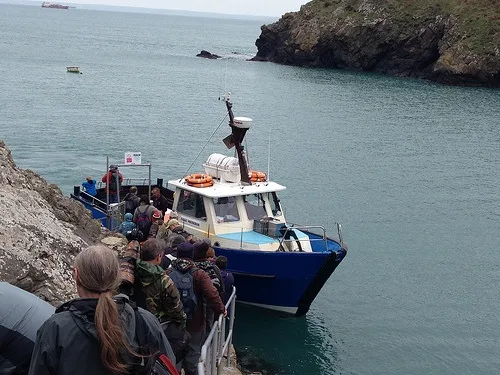
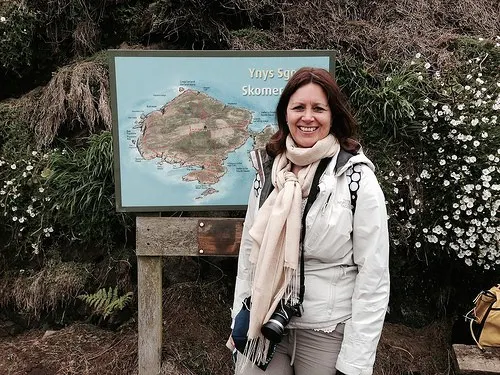
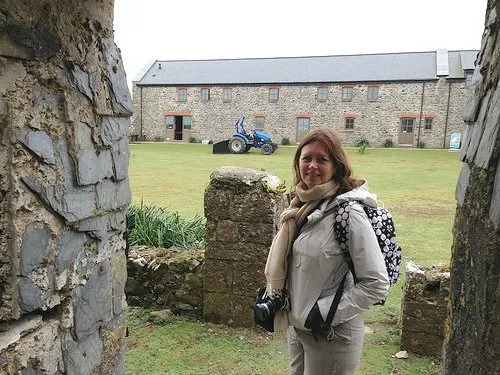
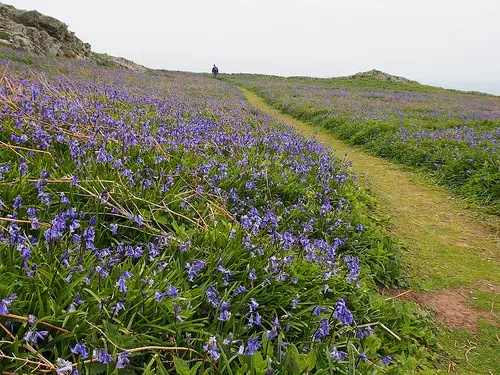
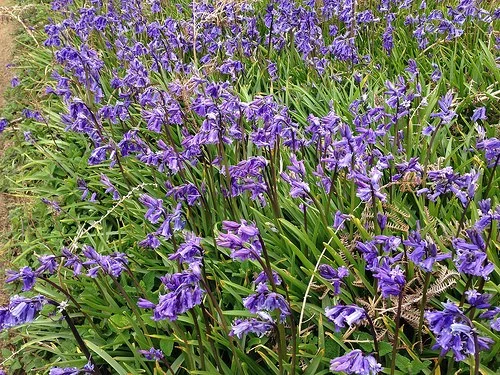
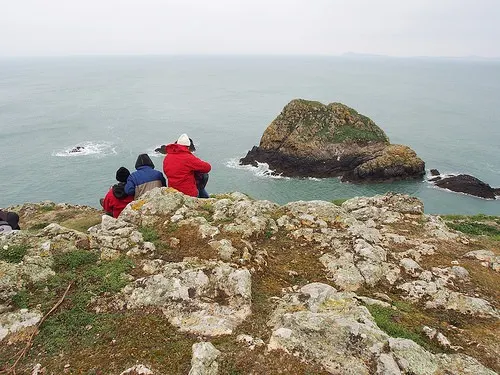
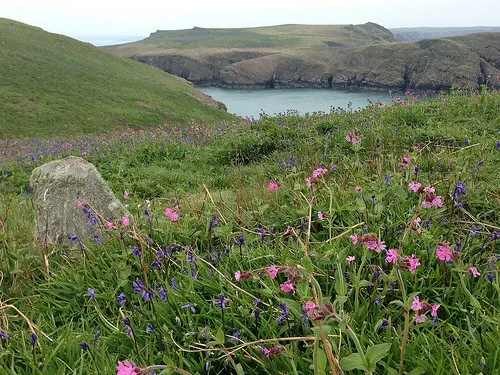
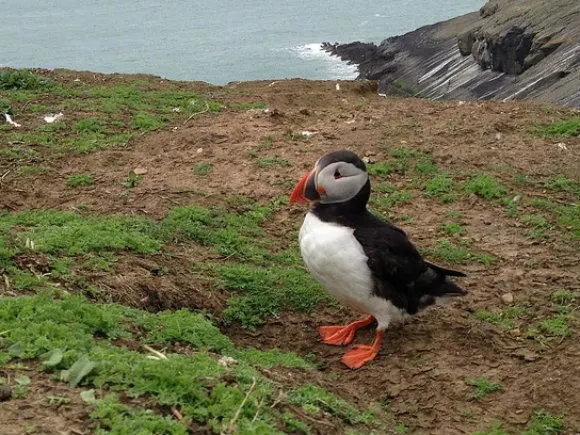
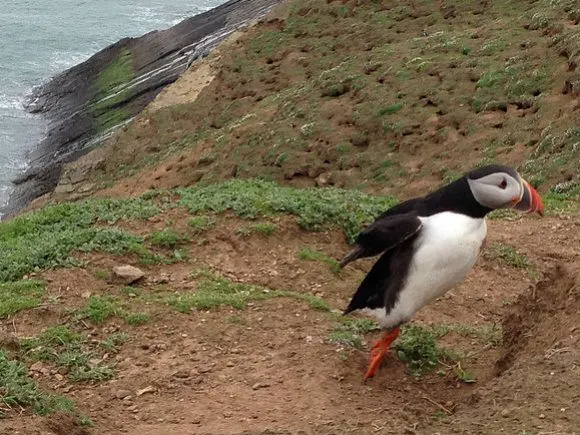
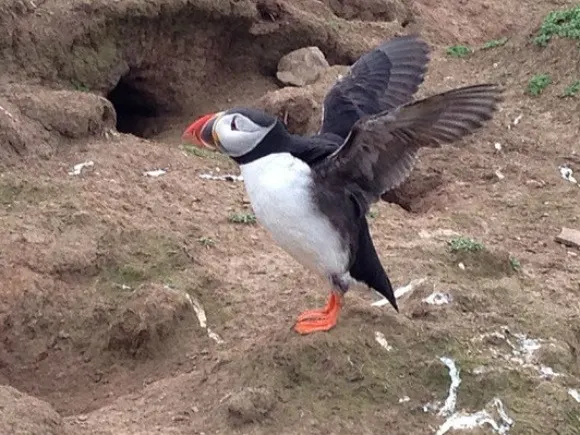
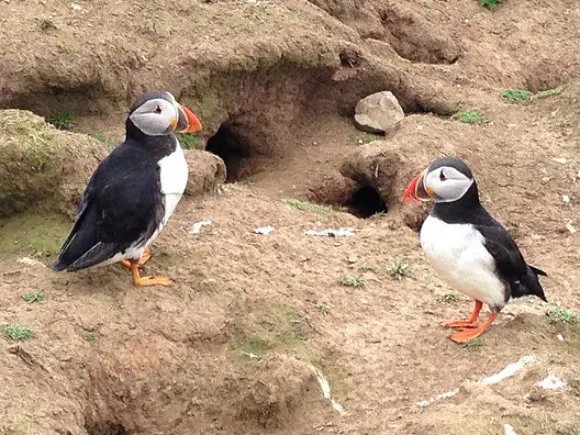
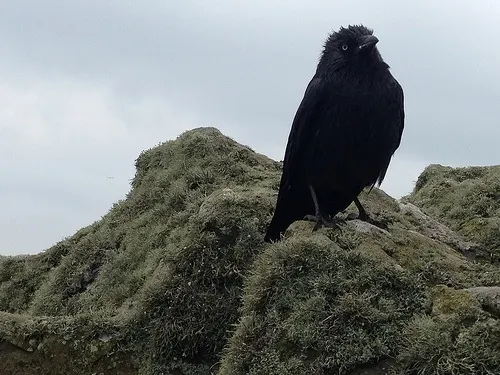
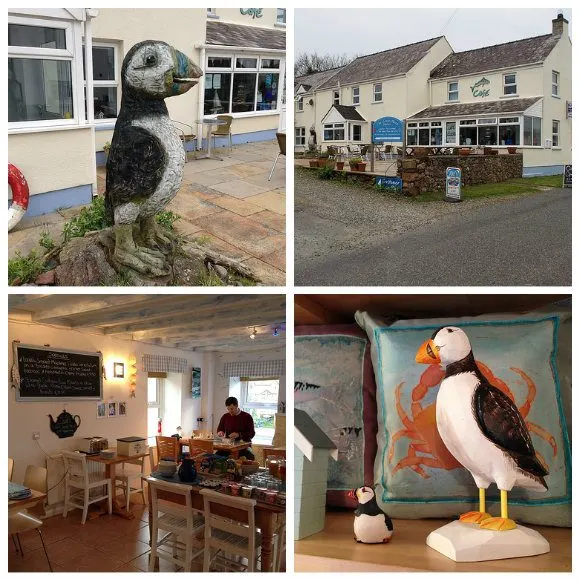

Great Britain Bucket List: England, Scotland and Wales || The Travel Tester
Tuesday 9th of January 2018
[…] Read more on: A Dangerous Business // A Little Adrift // Adventurous Kate // Camels and Chocolate // Our Oyster // Wonderful Wanderings // Where’s Sharon // Travelling King // Brendan’s Adventures // One Step 4Ward // Heather on her Travels […]
John
Sunday 10th of September 2017
this is amazing place to visit. thanks for sharing this article. but there are so many other wildlife sanctuaries where you can explore your experience. Jim Corbett national park is one of them. Check it out and give some review.
Jim
Wednesday 1st of June 2016
Hi Heather, sorry to be pedantic but the photo of the "blackbird" on your site is in fact of a jackdaw. Jim
Heather Cowper
Monday 6th of June 2016
@Jim Thanks, will have to get that updated
Suz
Thursday 26th of November 2015
Lovely pictures and happy memories for me. I was lucky enough to spend three nights on Skomer, would go back in a flash. It was magical at sunrise on the solstice watching the sun come up at the Garland Stone with two friends and no-one else!
Heather Cowper
Friday 27th of November 2015
@Suz I did wonder about staying overnight att Skomer - I think it would be fab to have the place to yourself but would probably only do it in summer as I thought it could be quite cold
Shikha (whywasteannualleave)
Sunday 18th of May 2014
Such great photos! I had no idea therewwere puffins in this part of the UK. Looks like a wonderful trip!
Heather Cowper
Sunday 18th of May 2014
@Shikha I only heard about the puffins when I was researching this trip and as they are nesting in May and June it seemed too good an opportunity to miss